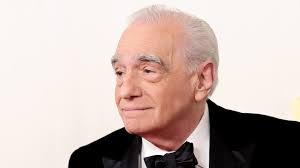Martin Scorsese’s Nostalgia for Cinema Signals Cultural Divide: As Classic Storytelling Meets TikTok Trends, Are We Losing Touch with True Art?
In a world where the rapid evolution of technology often leaves traditional art forms gasping for air, few cultural icons illustrate this tension as vividly as Martin Scorsese. Renowned for his contributions to cinema over the decades, Scorsese’s recent foray into the informal realm of TikTok—specifically, a video where he attempts to guess his own films based on Letterboxd reviews—has ignited discussions on generational differences in film appreciation and the implications for cinematic storytelling.
Scorsese’s association with high-quality storytelling and cinema’s grandeur stands in stark contrast to the fast-paced, bite-sized entertainment culture epitomized by platforms like TikTok. This clash raises significant questions: Is modern film criticism being diluted by social media? Are younger audiences losing their connection to the rich narratives that defined earlier cinema? The divide appears to be more than just a matter of taste; it reflects broader societal shifts and the ongoing tension between old and new.
Francesca Scorsese, Martin’s daughter, has become a key figure in bridging this divide as she engages her father with the contemporary film culture that permeates social media. Her TikTok videos not only display a playful dynamic between father and daughter but also expose Martin to the whims and nuances of modern film reception. In one particular installment, the playful comparison of “Ratatouille” and “Goodfellas” sparks intrigue and reflects a critical cultural conversation. The whimsical notion that a rat could thrive in a mafia-themed world serves not only as a humorous juxtaposition but as a commentary on the diverging paths of storytelling.
The use of Letterboxd reviews to assess his own films is a fascinating experiment in humility for a legendary director. It allows Scorsese to engage directly with audience interpretations and reactions, providing insight into how contemporary viewers interact with his body of work. However, one cannot ignore the underlying irony: a filmmaker acclaimed for his mastery of dense narratives is now subject to the whims of online reviews, often rife with quick judgments and meme culture. This raises serious questions about the validity and depth of film critique in an age dominated by social media impressions.
When analyzing the trajectory of film criticism through platforms like Letterboxd, it’s necessary to contextualize this within a historical framework. Traditional film critics, whose reviews were often shaped by extensive film knowledge and academic study, have seen their influence wane as social media democratizes content creation. The emergence of platforms that encourage user-generated reviews reflects a departure from established norms, where a single tweet or TikTok video can quickly garner significant attention and sway public opinion. In this light, the TikTok exchange between Martin and Francesca is not just a lighthearted interaction; it exemplifies a broader cultural shift where the nuances of storytelling can easily be eclipsed by viral moments and fleeting impressions.
Equally interesting is how this shift impacts the identity of cinema itself. Historically, films have served as a medium for profound exploration of human experiences, complex characters, and intricate themes. The shift towards digestible, entertainment-focused content risks diluting the essence of storytelling that has been a hallmark of cinema since its inception. While platforms like TikTok provide exposure and foster engagement, they also run the risk of stripping away the layers of artistic intent that have defined masterful filmmaking.
The unique appeal of Martin Scorsese’s work lies in his ability to weave intricate narratives that explore morality, identity, and the human condition. His films often demand more than a cursory glance; they require engagement, introspection, and, at times, active interpretation. As he navigates the contemporary film landscape through the lens of TikTok, the challenge remains: Can the depth of his storytelling resonate within a community that favors brevity over complexity?
Moreover, the question of whether characters like Remy from “Ratatouille” could thrive in the gritty world of “Goodfellas” reflects a fundamental shift in audience perception and expectation. It suggests a playful interaction with genre that could undermine the gravity of Scorsese’s narratives. In juxtaposing these beloved characters, audiences are invited to explore the boundaries of cinematic worlds, yet this blending of styles may also risk trivializing the thematic weight that serious films carry.
As Scorsese’s legacy unfolds amid the rapid evolution of film culture, the implications extend beyond just one director’s engagement with social media. It prompts a critical analysis of how the next generation of filmmakers and audiences will navigate this terrain. Will they preserve the legacy of cinematic storytelling, or will they be swept away by the tide of ephemeral content and superficial engagement?
In navigating these questions, it becomes clear that while platforms like TikTok offer new avenues for connection and engagement, they also challenge the integrity of film critique and artistic expression. Whether Scorsese’s willingness to embrace this new challenge is an indication of adaptability or a concession to changing cultural values remains to be seen. As the future of cinema unfolds, one can only hope that the richness of storytelling, a hallmark of Scorsese’s work, will find a way to resonate within an increasingly fragmented audience.

